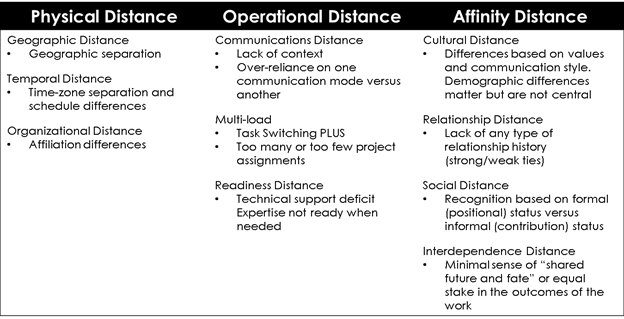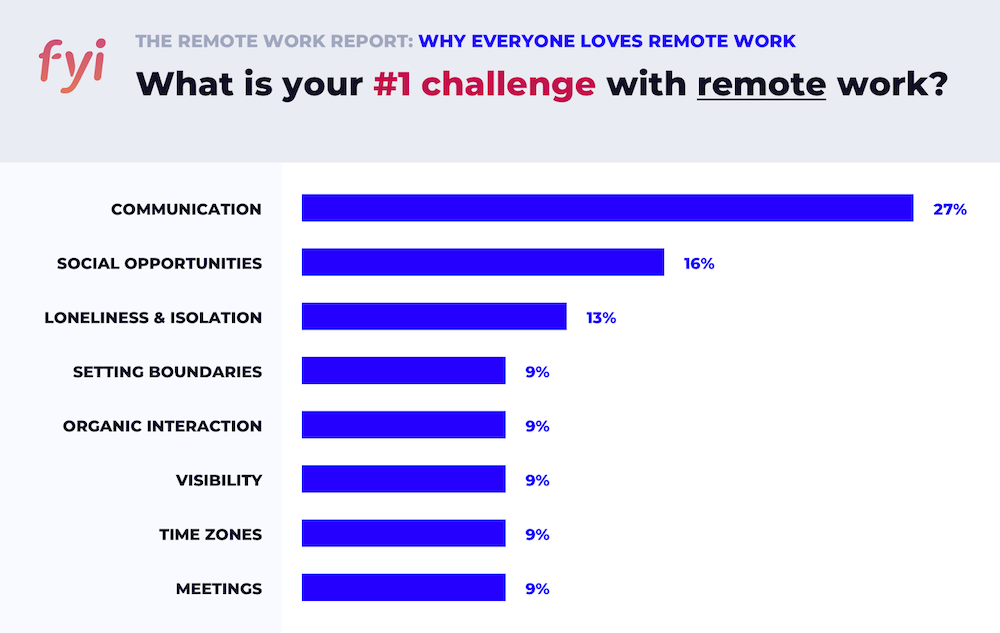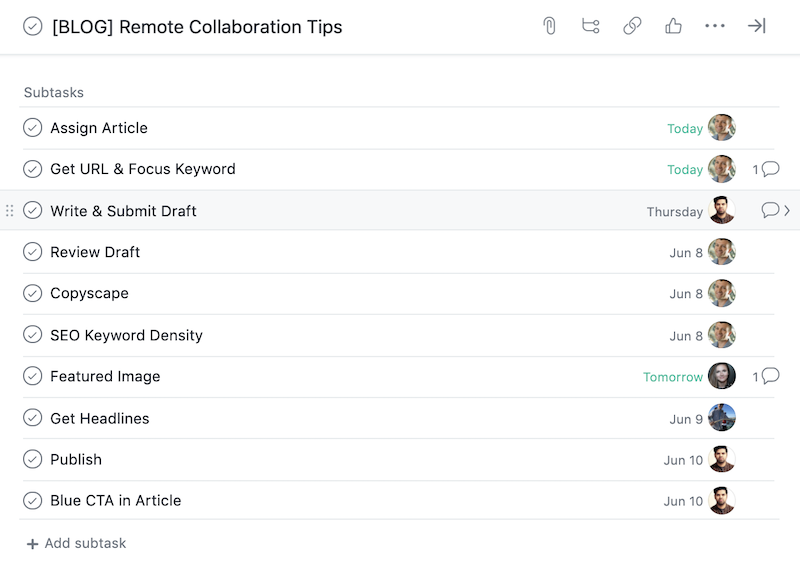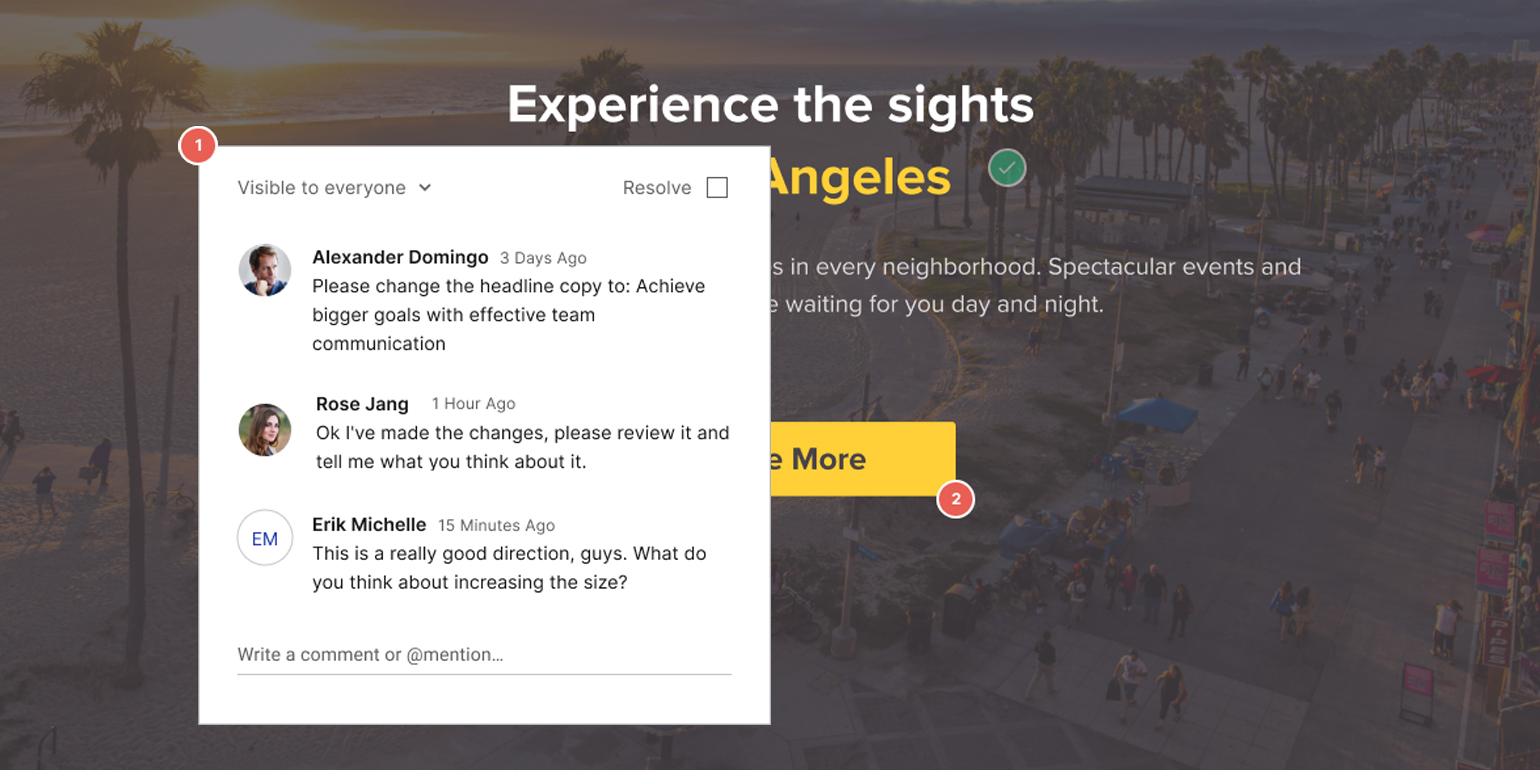For workers, remote collaboration is the new norm. But many organizations are struggling to reach pre-remote levels of productivity.
It’s expected. When employees are used to in-person meetings, or simply dropping by another desk to talk out an issue, even small tasks can balloon into long email chains, missed deadlines, and forgotten IMs when they require remote collaboration.
But it doesn’t need to be this way. Here are 8 tips to help you improve remote collaboration.
8 Remote collaboration tips
1. Reduce affinity distance
For anyone, distance can be isolating, but that’s especially true for remote team members. More than just physical distance, there are two other types that teams have to overcome to work efficiently:
- Operational distance (team size, bandwidth and skill levels)
- Affinity distance (values, trust, and interdependency)

According to an HBR article by Erica Dhawan and Tomas Chamorro-Premuzic, remote teams are most impacted by affinity distance. Without consistent face-to-face interaction and teamwork to build trust, remote employees can feel less like part of a team, and more like a people interacting with email avatars. Lack of body language, ambiguous text, and the shrinking boundary between work and home all present threats to remote collaboration.
But even if you can’t eliminate affinity distance, Dhawan and Chamorro-Premuzic suggest there are easy ways to reduce it:
Try switching most remote communication to regular video calls, which are a much better vehicle for establishing rapport and creating empathy than either emails or voice calls. And design virtual team-building rituals that allow people to interact regularly and experience their collaboration skills in action.
Video chat is easy to work into your communication channels. As for team-building, there are plenty of ideas for virtual gatherings centered around themed days or fun exercises.
The more you work to combat the inherent isolation of remote work, the less affinity distance will negatively impact your team.
2. Set boundaries and adhere to them
For remote teams, work hardly ever begins at 9 a.m. or ends at 5 p.m., even if it once did in the office. When your living space is the same as your workspace, boundaries aren’t evident, but they’re crucial to set. Dhawan and Chamorro-Premuzic present two scenarios that show why:
At 10 p.m., a corporate lawyer gets a text from a colleague and wonders (not for the first time) if there’s a protocol about work-related texts after a certain hour.
After a long and liquid client dinner, an advertising executive opens an email from his boss reminding him to submit his expenses on time. Annoyed by this micromanagement, he immediately responds with his uncensored thoughts.
It’s easy to see why both of these interactions could upset the remote employee. It’s also easy to understand that an ad executive’s boss has no way to know he’s at dinner, and a corporate lawyer’s boss could lose track of time, or assume that all her colleagues are workaholics.
That’s why boundaries are so important for remote teams. They reduce the likelihood of assumptions and miscommunications that can break down the team relationship. Unsurprisingly, a survey from FYI shows that two of the biggest problems remote workers face are related to communication and setting boundaries:

How to set the boundaries
Two important ways to set these boundaries are with communication time and type:
- Time: If the hours you operated in the office are 9 to 5, make sure your remote team knows that any communication after 5 may not be answered until 9 a.m. the next day. Even if this wasn’t a policy when you were in the office, something similar is important to set when remote employees already feel like they’re always at work. It will also ensure scenarios like the one ones above won’t occur.
- Type: If a colleague sends an email, you won’t feel like you have to answer immediately. If they send a Slack message, on the other hand, you’re likely to respond a little quicker. Whether we recognize it or not, communication types have a level of urgency attached to them.
Of the ones we use daily, email has the lowest priority, instant messaging is a little higher, texting a little higher than that, and a phone call is the highest. Each should be used accordingly. Don’t call about something that isn’t urgent, and in the same way, don’t email about something that is important.
If you’re the type to reach out on multiple platforms, this hierarchy of communication is for you. Text and phone calls should be reserved for urgent issues and not to be abused. Make the effort to keep all business communications within business hours, unless it’s about something critical enough to warrant a text or call.
When work and home are often the same place, remote employees require time and space to turn off and recharge, whether it’s on the couch alone or at a restaurant with friends. Without clear boundaries, remote teams won’t know when work is over, and managers won’t know when they’ve crossed the line.
3. Build in time for glitches
Microsoft Teams breaks down, Hangouts won’t support screen sharing, a rogue bombs your Zoom meeting…

We’ve all experienced technical difficulties with remote collaboration tools, so by now, we should be prepared for them. Still, some remote teams are not. And resolving them often involves fumbling around the platform, switching to another, pushing back other scheduled events, or even suspending them until a later date.
So how do you plan for them? According to Bob Sutton, organizational behavior expert, you should expect virtual presentations to last 25% longer than in-person presentations if the content is similar. In other words, for every hour you expect the meeting to last, add 15 minutes to the run time. If it’s scheduled to be a half-hour, expect around 40 minutes. You’re less likely to find yourself disorganized or panicking to correct issues on the fly.
4. Make data accessible to the organization
One of the biggest problems with collaborating remotely is that distance inherently creates silos. It’s just not as easy to get information from people when they’re not all in one location.
If your designer is unresponsive on email and Slack, for example, and you need an image file that’s on their hard drive, you can’t walk down the hall to their office. You’re forced to wait.
When the writer needs the image to write the headline, the developer needs the wireframe to make the page work, and the client is waiting for the manager to approve the finished product, it’s easy to see how just one roadblock can slow down an entire project significantly.
To ensure this doesn’t happen, the information should flow freely through the organization.
- Store data online in a central location where it’s accessible to all.
- Give departments access to relevant files and folders.
- Share schedules amongst employees so they have an idea of availability.
Though many organizations have already made these changes, some traditional ones have been able to get away with operating the old way. But now that most are working remotely if information access isn’t prioritized, remote collaboration is sure to suffer.
5. Don’t skimp on project management
Managing remote work is not the same as managing in-person work. While you might be able to operate without a project management tool when your team is in the office, it will become evident very quickly that you can’t remotely.
For the same reason, remote businesses need to organize data accessibly; you should not skimp on project management software. Tools like Trello and Asana help teams meet deadlines by holding members accountable and enabling managers to organize a project into smaller individual tasks. These tasks are written in detail and assigned to a specific team member:

If the team in the example above was using Trello, the manager could specify that the designer uploads his file to the software, or a file-sharing platform like Dropbox, by a specific date. This way, once the design was finished, the designer would know that his task wasn’t complete until he uploaded the file to a shared folder. The designer can mark the task finished, and the software will inform the copywriter to begin writing the headline for the page. The process minimizes check-ins via instant messaging and longer video calls, freeing time to focus on the project.
It may sound simple, but roadblocks that end in missed deadlines don’t need a complicated solution. They need an organized solution. When every remote worker has their own tools and workflows, different time zones, task management solutions are a must to keep remote teams on track.
6. Investing in remote collaboration tools
Since they started working from home, almost two-thirds of knowledge workers have increased their use of collaboration tools. But finding the right collaboration software for the job isn’t always easy.
Example
In departments that require in-depth, face-to-face meetings, it makes sense to invest in a high-powered video conferencing solution like Zoom. For ones that rely more on content, tools similar to Google docs that allow commenting and group editing are more useful.
But what about advertising departments focused on design, in which input from writers, designers, developers, strategists, and even managers is required to complete a project?
Usually, team collaboration on page designs can mean messy email chains and marked-up screenshots. Not with Instapage.

When you need to create post-click landing pages with a team, the Instapage Collaboration Solution allows every member to work on the same page in real-time. Design page elements, write copy, edit code, leave comments, and submit for approval to a manager. Learn more here about how the Instapage collaboration solution can immediately boost your productivity.
7. Re-evaluate your standard of productivity
The current remote working environment is the result of a particular phenomenon that no one was prepared for. Teams were not trained for remote work, systems were not put in place. And for this reason, it’s unrealistic to think that a remote team’s productivity will reach the levels it did before the transition. At least in the short-term.
Making up for this gap in productivity by overworking teams will have the opposite intended effect. What’s more likely to happen is you’ll burn them out or create a hostile working environment. Current levels of productivity aren’t always easy to improve. A manager would be better off re-evaluating their current measure of productivity, and working to support remote employees with what they need to do the job.
8. Ask your employees what they need from you
The expectations of a manager of remote employees are much different than the average office manager. As a people-oriented position, a manager may have trouble transitioning to an isolated environment where communication is not easy and rarely face-to-face.
If you find yourself directing a new remote team and you’re not sure how to support them, the worst thing you can do is pretend you know what you’re doing, or assume you know what your employees want. Every business is different.
Where one might benefit from new software, another may need more strict boundaries to recharge once they’re done with the workday. There’s nothing wrong with not knowing exactly what your team needs. Asking them is better than wasting resources on a solution that won’t move the needle toward better remote collaboration.
Get an enterprise demo from Instapage
One of the most effective ways to support remote teams is to ensure you have the right remote collaboration tools. Instapage comes built-in with a Collaboration Solution to break down silos caused by all three types of distance. Find out how to get your whole team on the same page, creating post-click landing pages faster than ever, by claiming a free enterprise demo.

See the Instapage Enterprise Plan in Action.
Demo includes AdMap™, Personalization, AMP,
Global Blocks, heatmaps & more.
